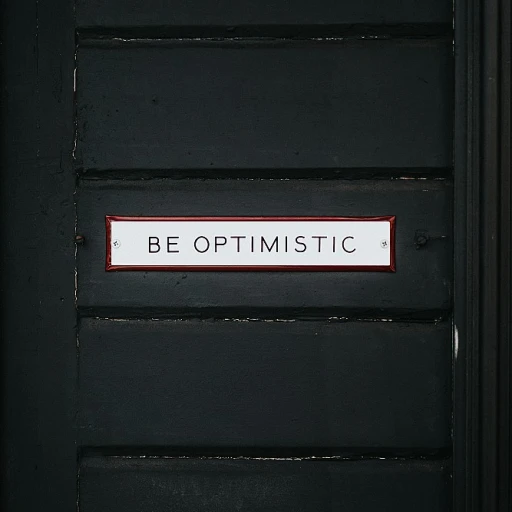
Defining the Agile Coach and Agile Leader
The Agile Coach: A Partner in Transformation
The role of an agile coach is crucial in the journey towards achieving business agility within an organization. Agile coaches are akin to change agents whose primary responsibility is to facilitate the adoption of agile methodologies, ensuring that both team-level and organizational-level agility are realized. Their expertise in agile principles and practices requires them to work closely with scrum masters and teams to nurture a culture of continuous improvement. By empowering teams and enabling agile practices, they help set a foundation for transformation that aligns with strategic business goals.
The Agile Leader: Guiding Strategy and Vision
An agile leader plays a vital role within the agile ecosystem by providing the strategic direction necessary for successful agile adoption. Agile leaders are often seen as strategic visionaries who establish an organizational culture that is conducive to agility. Their role extends beyond the traditional leadership paradigms by embracing an adaptive leadership style that focuses on enabling teams to thrive within an agile framework. This approach requires a profound understanding of both leadership and agile methodologies to ensure that the organization remains responsive to changes in the business environment.
In the realm of business agility, the distinction between agile coaches and agile leaders becomes apparent through their differing but complementary responsibilities. While coaches focus on the transformation at the team level, leaders are tasked with steering the entire enterprise agile journey. This symbiosis underscores the importance of agile coaching in nurturing a collaborative and empowering environment, as explored in empowering your team for success.
The Impact on Team Dynamics
The Effects on Collaborative Efforts
In the realm of agile transformation, the understanding of roles is pivotal in shaping the dynamics within teams. Agile coaches and agile leaders both play an essential part in fostering an environment that promotes collaboration and effective communication. These roles are not merely titles; they embody the essence of strategic agile coaching, which propels teams towards business agility, ensuring they are adaptable to changes. Agile practices encourage a culture of continuous improvement and open dialogue, benefiting the entire organization. When agile coaches infuse agile principles into the organizational culture, they provide strategic guidance to teams. This helps them understand their goals, adapt their workflows, and embrace the agile methodologies that enhance efficiency and productivity. Business agility thrives in an atmosphere where agile leaders focus on empowering individuals at the team level. By adopting an agile leadership style, they guide teams through the nuances of enterprise agile, influencing team dynamics positively. Effective agile leaders bring a sense of direction and purpose, aligning team efforts with the overall business objectives. In this journey, the scrum master often becomes a key figure, acting as a facilitator for agile adoption. Scrum masters work closely with agile coaches and leaders, ensuring that the teams remain committed to agile principles while embracing a mindset of learning and growth. Their role is crucial in coaching agile teams towards high performance and fostering an environment where team members can flourish. The interplay between agile coaches and agile leaders is where the true impact on team dynamics can be observed. These roles collaborate to dismantle silos, promote a strong organizational culture, and establish a foundation for agile transformation. By understanding agile concepts and implementing agile coaching effectively, these leaders instill a spirit of agility that transcends traditional boundaries, leading to empowered and resilient teams, as outlined in this article. Ultimately, the synergy between these roles not only enhances team dynamics but also sets the stage for entrepreneurial growth and success.Leadership Styles and Approaches
Leadership Approach in Agile Environments
In the dynamic landscape of modern business, understanding agile methodologies has become crucial for driving transformation and fostering a culture of continuous improvement. Agile leaders are pivotal in this transformation journey, acting as catalysts that inspire teams to embrace agility and collaborate effectively. Their strategic behaviors contrast with those of agile coaches, yet both roles share the ambition of enhancing the organization's cultural ecosystem. Agile leaders focus on aligning business goals with agile practices, actively promoting the adoption of agile principles across the organization. This strategic alignment is crucial for ensuring that teams operate with clarity and purpose, particularly at the team level where impact is most visible. On the other hand, agile coaches engage more directly with scrum teams, helping members integrate agile practices through targeted coaching sessions. While the agile leader may assume a broader strategic role, engaging with enterprise-level goals and organizational culture, the agile coach offers practical guidance at the coalface of team dynamics. This collaborative dynamic enhances business agility and ultimately facilitates an agile transformation that is more sustainable and effective. The distinctive focus each role brings is exemplified in how they approach challenges. A leader might focus on removing systemic barriers that hinder organizational agility, while coaches work hands-on, ensuring teams adhere to agile methodologies. Both paths require agile leaders and coaches to adapt their leadership styles, fostering an environment where teams not only meet their objectives but surpass them, a cornerstone of enterprise agile success. This link between leadership and team dynamics is vital for successful agile transformation, paving the way for an effectively agile organization. In contexts where the focus shifts to embracing a diverse range of agile roles, the coordination between agile leaders and coaches becomes even more pronounced. The agile leader, aware of the macro trends in the business world, sets the stage for innovation, whereas agile coaches act as guides on the ground, translating strategic insights into actionable frameworks that nurture team agility. This synergy is critical for sustaining the momentum needed in rapidly evolving business landscapes such as alarm receiving centers. career opportunities in alarm receiving centers illustrate how different agile roles can adapt to sector-specific needs, underscoring the versatility and adaptability of both leaders and coaches. This strategic symbiosis propels enterprises towards achieving their agile aspirations.Challenges in Entrepreneurship
Overcoming Entrepreneurial Challenges with Agile Practices
In the realm of entrepreneurship, the adoption of agile methodologies can be both a boon and a challenge. As organizations strive for agility, they often encounter hurdles that require strategic navigation. Understanding the distinct roles of agile coaches and agile leaders becomes crucial in this context.
Agile coaches play a pivotal role in guiding teams through the agile transformation process. They ensure that agile principles are not just understood but also effectively implemented at the team level. However, the journey is not without its obstacles. One of the primary challenges is fostering a culture of continuous improvement within the organization. This requires a shift in mindset, where teams are encouraged to embrace change and learn from failures.
On the other hand, agile leaders are tasked with the strategic oversight of the agile adoption process. They must balance the immediate needs of the business with long-term goals, ensuring that the organization remains competitive in a rapidly changing market. This often involves making tough decisions that can impact the organizational culture and the overall business agility.
Both roles must work in tandem to address the challenges of enterprise agile adoption. While agile coaches focus on the day-to-day coaching of teams, agile leaders provide the strategic direction needed to align agile practices with the organization's objectives. This synergy is essential for overcoming the barriers to successful agile transformation.
Moreover, the role of the scrum master, often seen as a bridge between the team and the agile coach, is critical in ensuring that scrum practices are adhered to. Scrum masters facilitate the agile process, helping teams to navigate the complexities of agile methodologies and maintain focus on their goals.
In conclusion, the challenges faced in entrepreneurship when adopting agile practices are multifaceted. However, with the right leadership and coaching, organizations can navigate these challenges effectively, paving the way for a successful agile transformation.
Synergies Between Agile Coaches and Leaders
Achieving Harmony between Coaches and Leaders
In the agile landscape, both agile coaches and agile leaders play pivotal roles in navigating the transformation journey. While their responsibilities may seem distinct, there are significant opportunities for synergy, which are vital for driving continuous improvement and fostering an organization’s business agility.- Complementary Expertise: Agile coaches bring a rich understanding of agile methodologies, focusing on coaching agile teams and fostering an environment conducive to learning and adaptation. Agile leaders, on the other hand, provide strategic direction, ensuring alignment with the broader enterprise goals. By collaborating, they can effectively merge strategic intent with agile practices at the team level.
- Shared Vision for Transformation: Both roles strive for an agile transformation by promoting agility across the organization. Agile coaches often facilitate workshops and training to instill agile principles within the organizational culture, while agile leaders are tasked with embedding agility into strategic plans and decision-making processes.
- Cultural Integration: The integration of agile roles necessitates a strong and cohesive organizational culture. Agile leaders work strategically to align business objectives with agile adoption, while coaches focus on nurturing a culture of trust and openness. Together, they ensure that transformations are not only technical but also cultural.
Case Studies and Real-World Examples
Real-World Insights into Agile Roles
In the dynamic landscape of modern business, understanding the distinct roles of agile coaches and agile leaders is crucial for successful agile transformation. Real-world examples provide valuable insights into how these roles function within organizations, enhancing team dynamics and promoting business agility.
Case Study: A Tech Enterprise's Agile Journey
Consider a large tech enterprise that embarked on an agile transformation journey. The organization appointed agile coaches to guide teams in adopting agile methodologies, such as scrum and continuous improvement practices. These coaches played a pivotal role in fostering an organizational culture that embraced agility and innovation.
Meanwhile, agile leaders within the enterprise focused on strategic alignment and ensuring that agile principles were integrated at the enterprise level. Their leadership styles emphasized collaboration and empowerment, enabling teams to adapt quickly to changing market demands.
Lessons from a Retail Business
In a retail business setting, agile coaching was instrumental in enhancing team performance. Agile coaches worked closely with scrum masters to implement agile practices, ensuring that teams were aligned with the organization's strategic goals. This collaboration led to improved team dynamics and a more responsive organizational culture.
Agile leaders in this context took on the role of visionaries, guiding the business through periods of change and uncertainty. Their leadership approaches focused on nurturing a culture of continuous improvement, which was essential for maintaining a competitive edge in the retail market.
Synergies and Challenges
These case studies highlight the synergies between agile coaches and leaders. While agile coaches focus on coaching agile teams and facilitating agile adoption, agile leaders provide the strategic direction necessary for sustained business agility. However, challenges such as resistance to change and aligning agile practices with existing business processes can arise.
Ultimately, the success of agile transformation depends on the ability of both roles to work in harmony, leveraging their unique strengths to drive organizational success.












